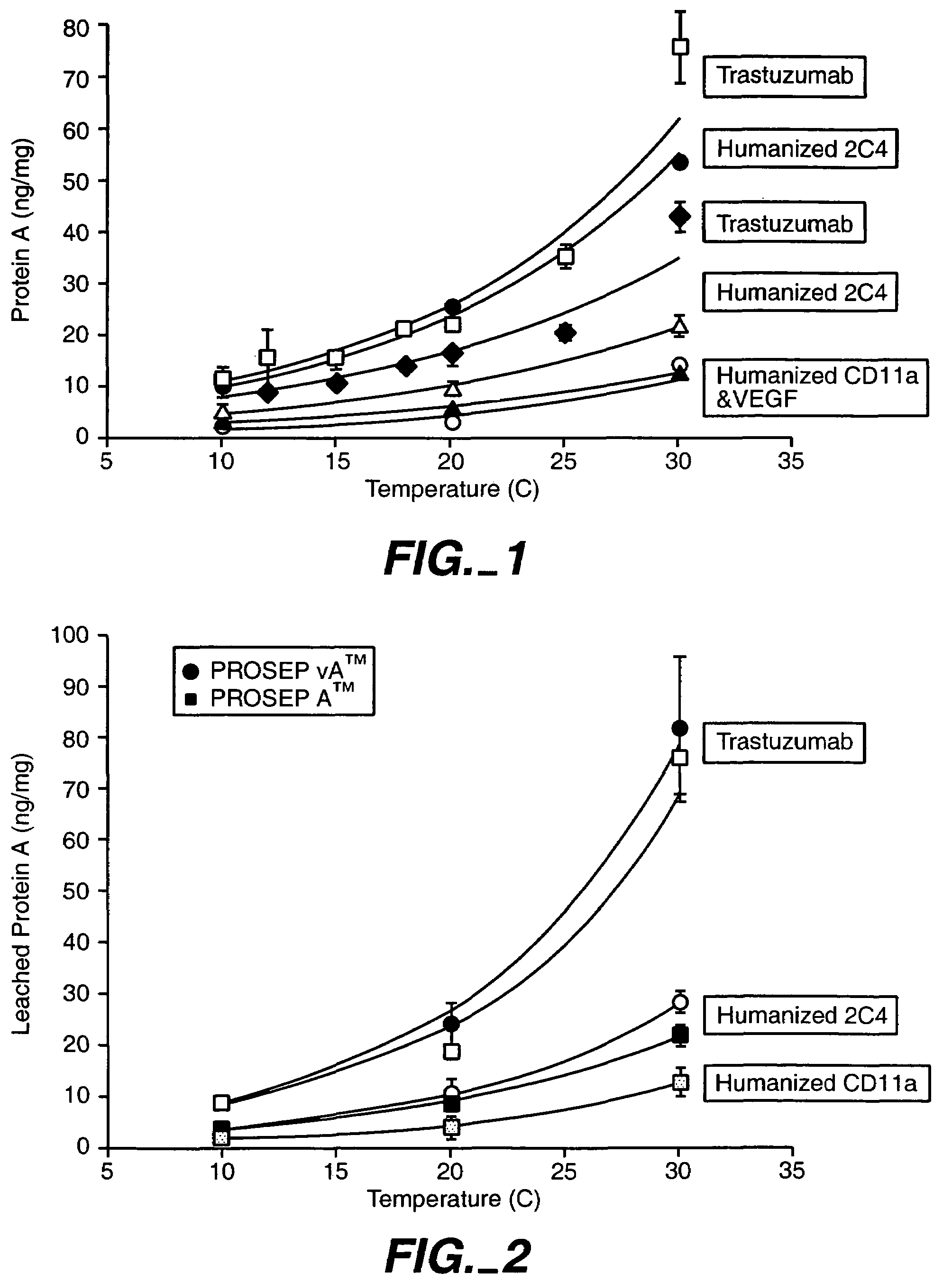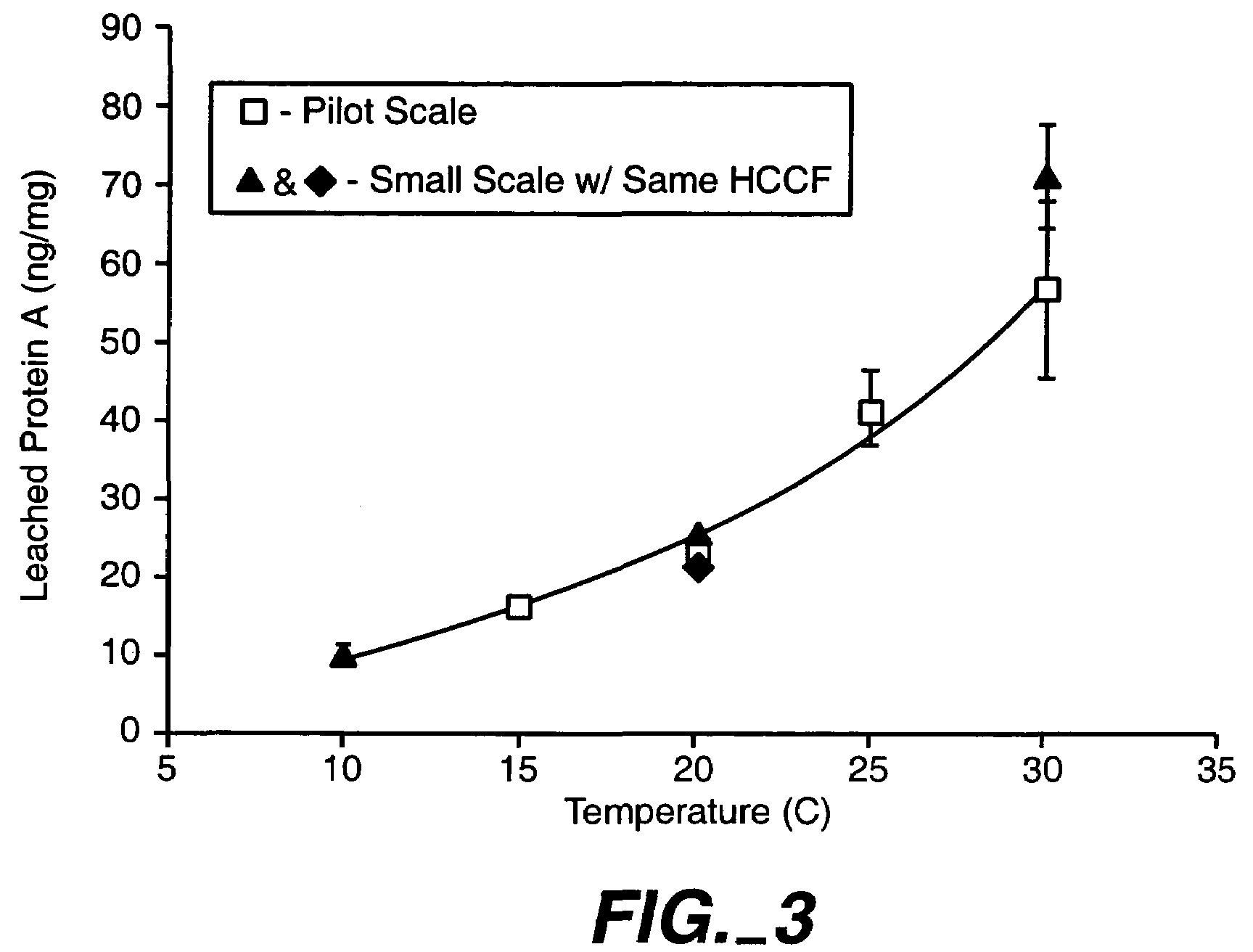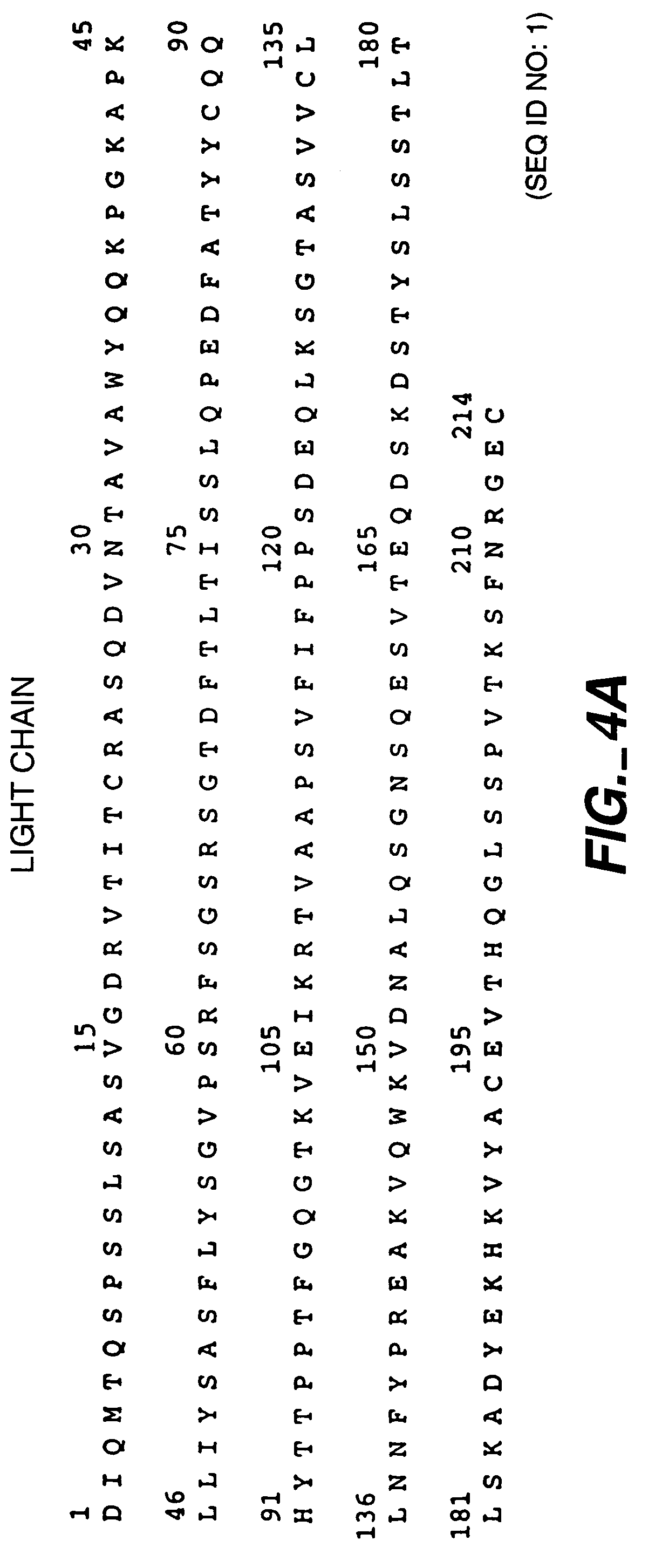Reducing protein A leaching during protein A affinity chromatography
a technology of affinity chromatography and protein a, which is applied in the field of protein purification, can solve the problems of difficult removal of subcellular fragments and formidable challenges of human therapeutic use, and achieve the effect of reducing the temperature of a composition and reducing the amount of protein a leaching
- Summary
- Abstract
- Description
- Claims
- Application Information
AI Technical Summary
Benefits of technology
Problems solved by technology
Method used
Image
Examples
example 1
Temperature Reduction for Reducing Protein A Leaching During Protein A Affinity Chromatography
[0130]Protein A affinity chromatography is a powerful and widely-used tool for purifying antibodies. It efficiently removes host cell proteins, DNA, and small molecules from the product. Harvested cell culture fluid (HCCF) can be loaded directly onto the resin and the antibody binds to the protein A. Low pH elutes the bound antibody, but may carry leached protein A into the product pool. Since protein A ligand is immunogenic, derived from Staphylococcus aureus, it must be cleared from the product pool by downstream processing.
[0131]To characterize the temperature dependence of protein A leaching, the effect of temperature on protein A leaching was evaluated with respect to the following proteins:[0132]1. Recombinant humanized HER2 antibody Trastuzumab (HERCEPTIN®); Carter et al., Proc. Natl. Acad. Sci. USA, 89:4285-4289 (1992), U.S. Pat. No. 5,725,856, U.S. Pat No. 5,821,337, and FIGS. 4A-B...
example 2
Protease Inhibitors for Reducing Protein A Leaching During Protein A Affinity Chromatography
[0154]Protein A chromatography may be used as an initial capture step in a recovery process for an antibody, such as an antibody recombinantly produced by a Chinese Hamster Ovary (CHO) cell. This step achieves a high degree of purity while maintaining a high yield. Leaching of the Protein A ligand into the elution pool is a disadvantage of this step, which may require subsequent chromatography steps to remove the leached Protein A. PROSEP A™ and PROSEP vA™ resins which can be used for Protein A chromatography, comprise the Protein A ligand immobilized onto a controlled pore glass (CPG) backbone.
[0155]Protein A can leach from the CPG backbone through several mechanisms, including, but not limited to, mechanical shearing, low pH exposure during the elution phase, and / or proteolytic activity. As shown in Example 1 above, Protein A leaching was shown to be dependent on temperature during loading....
PUM
| Property | Measurement | Unit |
|---|---|---|
| Temperature | aaaaa | aaaaa |
| Temperature | aaaaa | aaaaa |
| Temperature | aaaaa | aaaaa |
Abstract
Description
Claims
Application Information
 Login to View More
Login to View More - R&D
- Intellectual Property
- Life Sciences
- Materials
- Tech Scout
- Unparalleled Data Quality
- Higher Quality Content
- 60% Fewer Hallucinations
Browse by: Latest US Patents, China's latest patents, Technical Efficacy Thesaurus, Application Domain, Technology Topic, Popular Technical Reports.
© 2025 PatSnap. All rights reserved.Legal|Privacy policy|Modern Slavery Act Transparency Statement|Sitemap|About US| Contact US: help@patsnap.com



